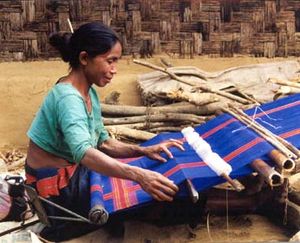Asia Under Girls 027
Culture and gender roles

In many prehistoric cultures, women assumed a particular cultural role. In hunter-gatherer societies, women were generally the gatherers of plant foods, small animal foods, fish, and learned to use dairy products, while men hunted meat from large animals. Since the 13th century BC in Assyria, the veil was used by women to cover hair or face, and spread with the uprise of Christianity to Europe and with the Byzantine Empire into the Arabian peninsula. If worn with religious intention, it is meant to protect the woman from the environment or the public view to protect her grace and honor and thus is sometimes considered a symbol of patriarchy.[2] If not worn with religious impetus, veil and skirt have still been typical symbols of a woman.[specify]
In more recent history, the gender roles of women have changed greatly. Traditionally, middle-class women were typically involved in domestic tasks emphasizing child care, and did not enter paid employment. For poorer women, especially working class women, this often remained an ideal[specify], as economic necessity compelled them to seek employment outside the home. The occupations that were available to them were, however, lower in prestige and pay than those available to men.
As changes in the labor market for women came about, availability of employment changed from only "dirty", long houred factory jobs to "cleaner", more respectable office jobs where a little more education was demanded, women's participation in the labor force rose from 6% in 1900 to 23% in 1923. These shifts in the labor force led to changes in the attitudes of women at work, allowing for the "quiet" revolution which resulted in women becoming more career and education oriented. This revolution of women in the labor force came about because of changes in three essential criteria: expanded horizons- women were anticipating their future work lives, allowing them to then plan for them and receive the education they needed to accomplish that goal; altered identities- Women's identities were no longer based upon just family and child-bearing. Their focus became more on career and financial success, and defined themselves thus; Changes in decision making- Women were making decisions regarding their lives, education, and career goals. Marriage was postponed and more women made time to focus on a career and an education, rather than just going to college to meet a spouse. [Information from article by Claudia Goldin, "The Quiet Revolution that Transformed Women's Employment, Education, and Family"]
Women's movements advocate equality of opportunity with men, and equal rights irrespective of sex. Through a combination of economic changes and the efforts of the feminist movement[specify] in recent decades women in most societies now have access to careers beyond the traditional one of "homemaker".
Women in industry and commerce face glass ceilings[citation needed].
These changes and struggles are among the foci of the academic field of women's studies[citation needed].
Source from : http://en.wikipedia.org/wiki











No comments:
Post a Comment